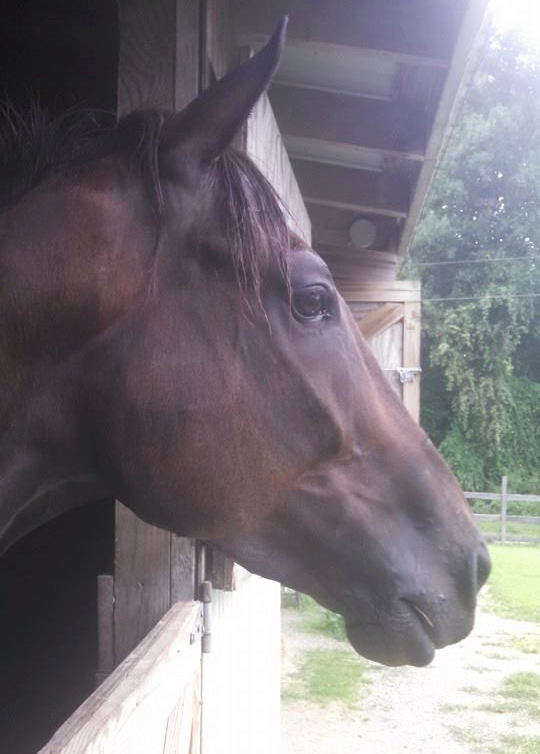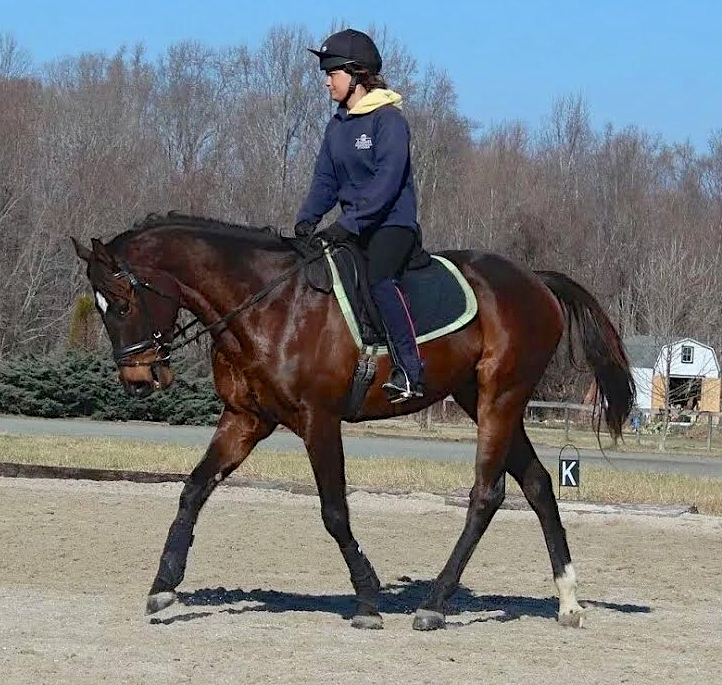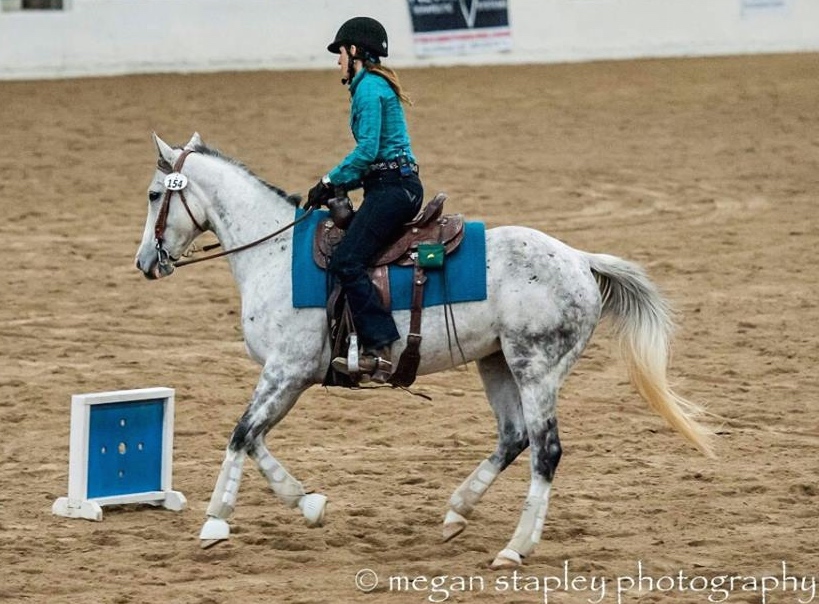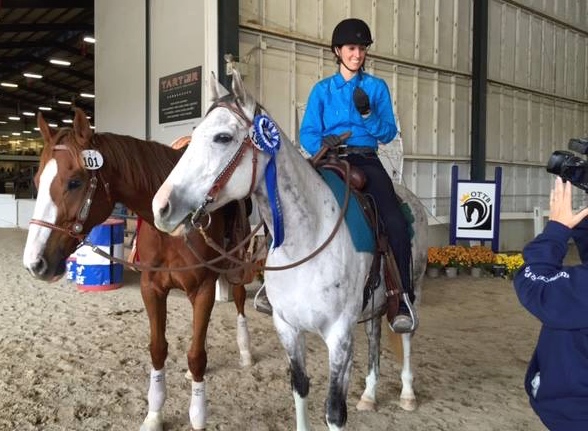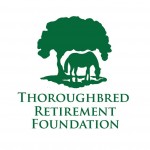
Emma, 11, walks with the broodmare she saved from auction last summer. “I promised her.” Photo by Kay O’Hanlon Myruski
A lumpy-legged Thoroughbred broodmare escaped death in a Canadian slaughterhouse last summer after a young girl, who had befriended the animal in her last hours, pleaded with adults to spare her.
The deal had already been made; the old mare dubbed “Ruby” was set to ship to a Canadian slaughterhouse when the last human to touch the mare’s soft black-and-tan muzzle turned out to hold all the cards in the fate of this one horse.
“I call my daughter Emma my tiny, little horse whisperer,” says longtime horseman and rescue volunteer Kay O’Hanlon Myruski of Goshen, N.Y. “She’d honed in on this mare right from the beginning and they formed a fast connection. Emma sat in a hay manger all day feeding her hay by hand and kissing her. The mare was obviously a used-up broodmare who’d been thrown away.”
Tied with bailing twine to a long, oak feed manger, Ruby stood sweetly on severely cracked and malformed feet while frightened horses tethered nearby bit and kicked. Ribs showed against her big, broodmare belly, and yet the mare’s beauty still showed on her face and her gentle manner toward young Emma.
And Emma, 11, was delighted with her new friend as she promised her aid. “I told her I’d get her out of there, and that no matter what happened, she’d be safe,” Emma says, noting that she gravitated toward the broodmare, who stood at the end of the line of horses, not eating, and trying to back away from their frightened kicks and bites.

The pair formed a fast bond in the auction house.
“I stood with her because I was kind of scared for her. Every time a horse kicked she tried to get away, but she couldn’t.”And the girl was delighted with her new friend as she promised her aid. “I told her I’d get her out of there, and that no matter what happened, she’d be safe,” Emma says, noting that she gravitated toward the broodmare, who stood at the end of the line of horses, not eating, and trying to back away from their frightened kicks and bites.
Balancing her time between babysitting the mare and running back to check in with her mother, the frenzy of the sale took hold and suddenly Ruby was gone.
“I went back to find her and she wasn’t there,” Emma recalls. “So I looked around until I found her” in a known kill-buyer’s pen.
The sickening discovery sent Emma into a tailspin. Even though she’d seen horses saved and horses not saved, she couldn’t quite grasp that this beautiful black mare was beyond her reach.
“As soon as Emma found out she’d been sold to a kill buyer she started crying hysterically,” Myruski says. “So a friend of mine, who also volunteers at the auction, approached the kill buyer, who was luckily one of the ones who is very nice to us, and my friend explained that there was a little girl in tears who wanted the mare. He just kind of shook his head, and let us have her.”
Having no idea what the mare’s background was, what her tattooed lip might eventually reveal about her past identity, and even in spite of her injured leg and cracked feet, flattened with wear; they took her anyway. To their Goshen farm, where for four generations animals and humans have worked together in harmony.“As soon as Emma found out she’d been sold to a kill buyer she started crying hysterically,” Myruski says. “So a friend of mine, who also volunteers at the auction, approached the kill buyer, who was luckily one of the ones who is very nice to us, and my friend explained that there was a little girl in tears who wanted the mare. He just kind of shook his head, and let us have her.”
“We’ve had horses in my family going way back. Our farm is in the trotter capital, and my father, Derek Horne, spent years campaigning in Ireland against the transport of live horses out of Cork, on boats, to slaughter. I think some of my father rubbed off on my daughter, who has been coming to the auction at Unadilla with me ever since I could strap her into a car seat.”
The love story has continued with Emma and Ruby. The mare has grown strong and her kind spirit is in tact. “She’s a lovely, lovely mare. A lot of broodmares can be rude and aggressive, but not this mare,” Myruski says. “She’s so good that we’re going to start training her under saddle in the spring. She’s such a beautiful mover and I’m hoping that Emma will able to use her as her equitation horse.”
But more important than equitation and horse shows is the good work that her daughter is learning at a young age.
“This child gets up at 3 a.m. to go to the auction with me,” Myruski says. “She’s the future of horse rescue.” — This story was originally published on March 6, 2015.

